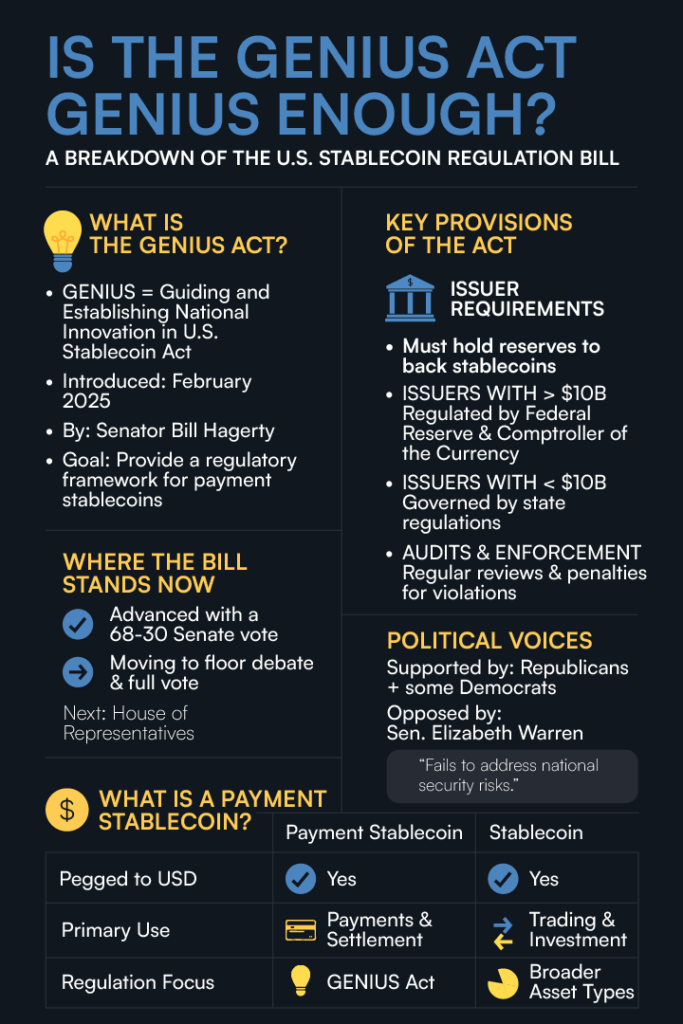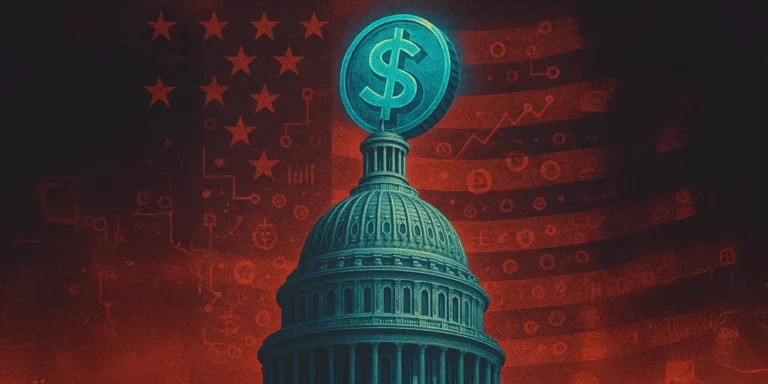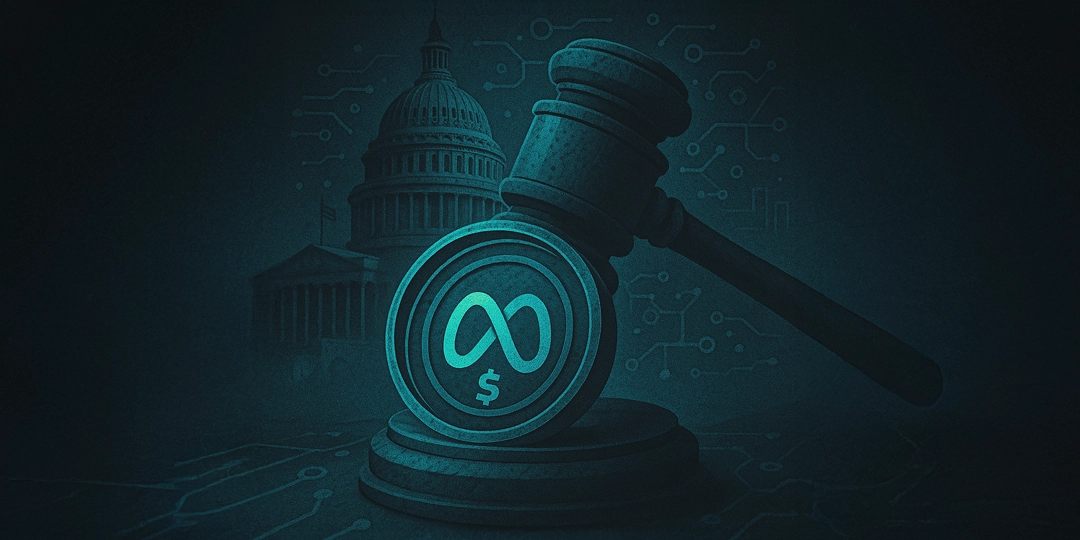Stability and payment efficiency speak loudly about stablecoins. These are two of the primary reasons why countries like the US argue for the need for stablecoin regulation. The recently advanced Guiding and Establishing National Innovation in US Stablecoin (GENIUS) Act secured a 68-30 vote in the Senate and passed on to the next stage of legislation. The bill was not only supported by the ruling Republicans but was also nodded yes by several Democrats.
I’m on my way to the Senate floor to give a speech ahead of the vote on the GENIUS Act. Let’s get it done. pic.twitter.com/mXnnxozdt8
— Senator Bill Hagerty (@SenatorHagerty) June 11, 2025
Last month, the US Senate did a procedural vote to advance the bill, which resulted in 66 – 32 votes. Although the stablecoin act is progressing with hype, some Senate members, including Elizabeth Warren, have urged their colleagues not to vote in favor of the act. Warren has brought to light her concerns regarding the act in a statement: “The GENIUS Act massively expands the marketplace for stablecoins while failing to address the basic national security risks posed by them.”
However, the pro-stablecoin act members find the GENIUS Act a gem in terms of stability, payment speed, regulatory clarity, and more.
What is the GENIUS Act, and why does it matter?
Introduced in February 2025 by US Senator Bill Hagerty, the GENIUS Act intends to provide a clear and comprehensive regulatory framework for payment stablecoins. The bill could be a competitor in the global digital market, with the government’s true mission to spearhead the dominance of the US dollar globally.
Payment stablecoin vs. stablecoin
Senator Hagerty officially states that payment stablecoin is “a digital asset used for payment or settlement”, pegged to a fixed monetary value like a US dollar or safe bank deposits. It is a subset of stablecoin that can be used for payment. Meanwhile, a stablecoin remains stable as a payment stablecoin, but is more exposed to trading and investment.
Is the GENIUS Act a clear regulatory framework for payment stablecoins?
According to Senator Hagerty, the GENIUS Act puts forward the following features;
- The Act brings clear procedures for stablecoin issuing institutions.
- Executes reserve requirements, meaning issuers must hold reserves to back the stablecoins.
- Stablecoin issuers with more than $10 billion in stablecoins have to follow the Federal Reserve’s regulatory framework for depository institutions and the Comptroller of the Currency’s framework for nonbank issuers.
A depository institution has the legal permission to accept deposits from the public, whereas nonbank issuers are financial entities such as insurance companies or investment firms that are not permitted to accept deposits from the public - Stablecoin issuers holding less than $10 billion in stablecoins must follow state regulations. Big issuers can also get approval to remain state-regulated.
- The GENIUS Act regulates, conducts regular audits, and takes enforcement actions against issuers in case of violation of the rules.

The current status of the bill is that it has advanced to the next phase of legislation after 68 senators voted to invoke closure for the bill. The bill is now up for debate and a full floor vote, and if it passes, it will move to the House of Representatives.
Among the countries that are keen on a stablecoin regulatory framework are the European Union, the UK, Japan, Brazil, the UAE, Hong Kong, and more.










